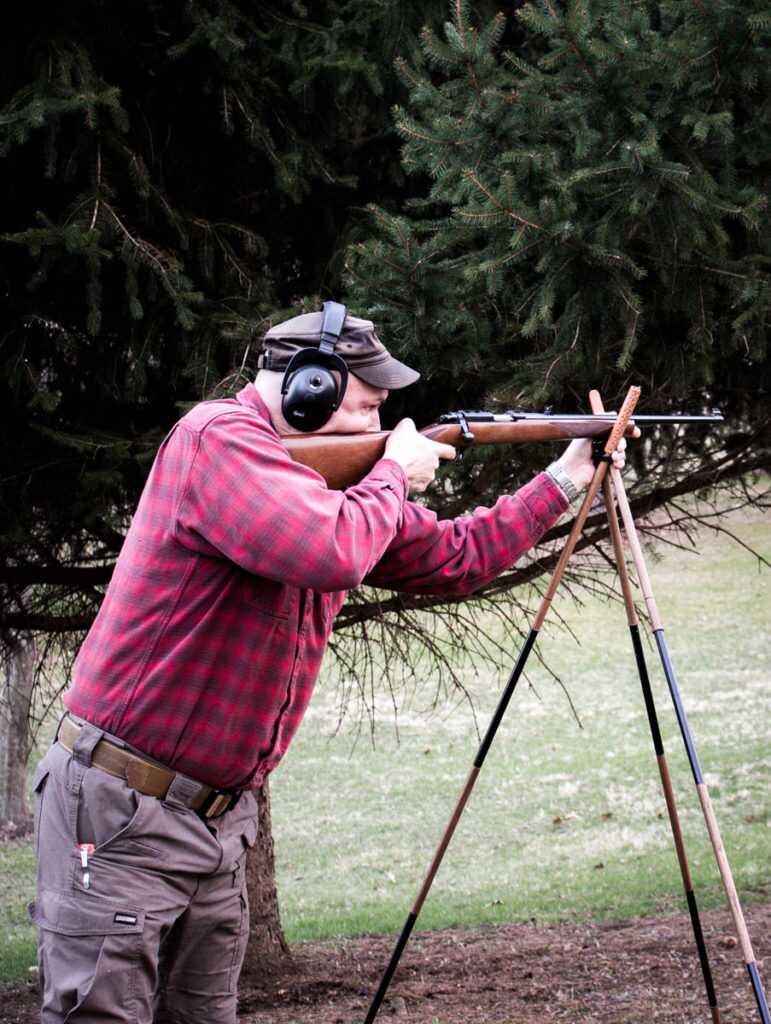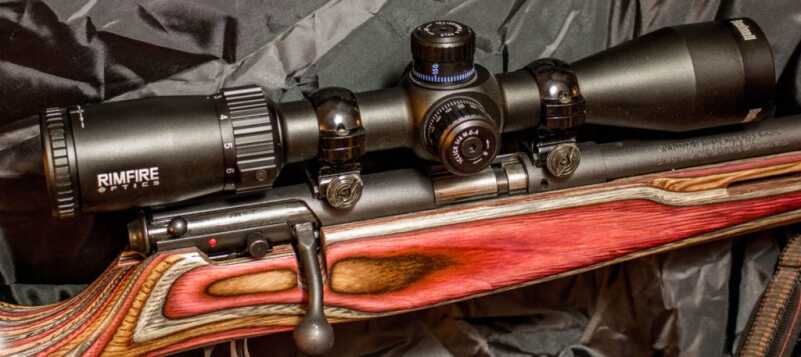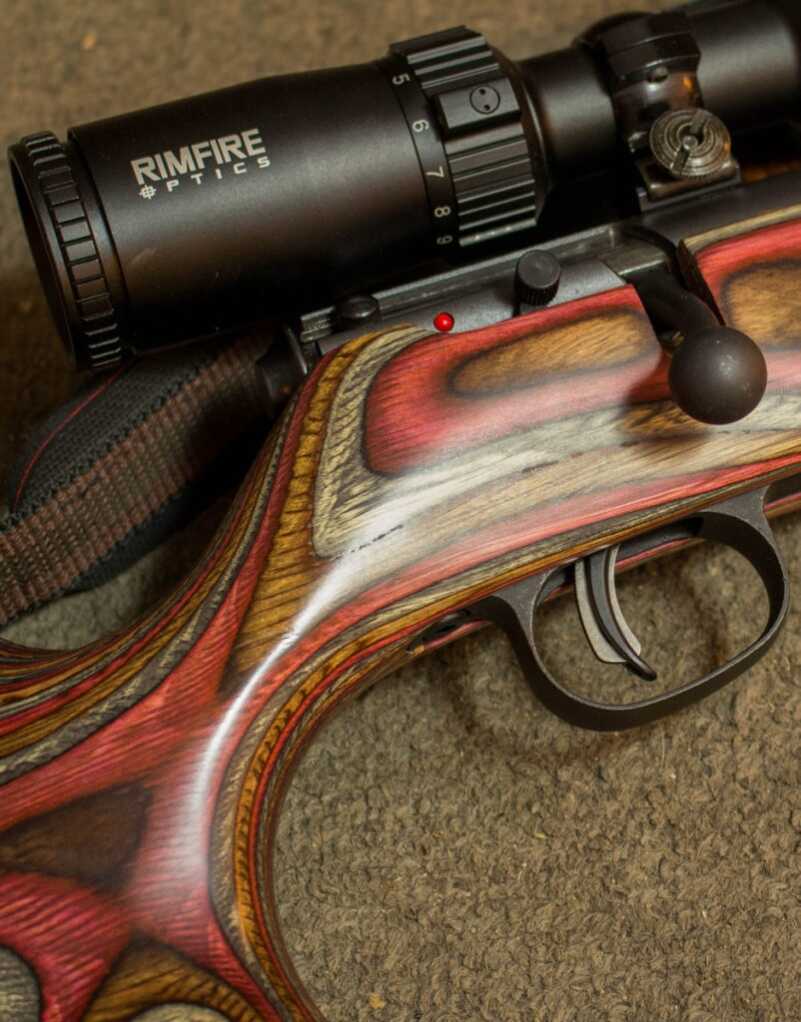 It was more than likely your first rifle; in some configuration or another, a good .22 rimfire was probably what started you on the rifle path. The pursuit of rabbits and squirrels, the hours spent plinking tin cans, the sessions spent concentrating on the target’s center; all were important steps in becoming a hunter and shooter.
It was more than likely your first rifle; in some configuration or another, a good .22 rimfire was probably what started you on the rifle path. The pursuit of rabbits and squirrels, the hours spent plinking tin cans, the sessions spent concentrating on the target’s center; all were important steps in becoming a hunter and shooter.
While the .22 Long Rifle cartridge has been a highly economical choice – despite the terrible dry spell five years past – it doesn’t have the same capabilities of the bigger and faster centerfire cartridges. Its mild velocity (and subsequent lack of recoil) is a blessing if you look at it in a certain light. Whether your rifle is scoped or iron-sighted, there is more than just a squirrel rifle here, there is a teaching tool for both the novice and the accomplished marksman alike, and you can practice for nearly any hunting or shooting situation imaginable.
Wind calls, trajectory compensation, trigger control, and even the basic shooting form can be practiced and polished by using nothing more than a simple .22 rimfire. I’ve relied on the one and only .22 that I call my own – though I have shot literally hundreds of rifles chambered for the little rimfire gem – to help me when my own shooting mechanics have fallen below the levels at which I know I can perform. Whether a long session of shooting big bore rifles has taken its toll, or it’s nothing more than a rough day at the bench, grabbing that old rifle – my first, a Christmas gift from my father – can easily show my flaws and help me correct them.

A good .22 Long Rifle can offer plenty of affordable practice, helping to combat the effects of heavy-recoiling rifles.
You can set up a small, short backyard range that can help hone your shooting skills, and will translate directly to your centerfire rifle when used at truly long ranges. Small steel plates, spinning targets, paper targets – especially handy for observing wind drift at various distances – can be sprinkled around a backyard range so as to provide a challenging range experience, especially if you have the room to place targets at varying angles to the predominant wind.
Safari Preparation

The Heym Express .404 Jeffery (top) and the Ruger 77/22 (bottom). The smaller rimfire rifle can be used in conjunction with the safari gun to sharpen your shooting skills.
For those of you headed on an African safari – especially those who will be using an iron-sighted big bore – the .22 rimfire can be invaluable. My own rifle is a Ruger Model 77/22, built like a scaled-down big game rifle with a three-position wing safety, and fully adjustable iron sights. It is a bolt-action repeater, so the mechanics are all there – with the exception of the detachable magazine – and I use mine not only to sharpen my skills with an iron sighted rifle but for practicing the fundamentals of shooting off sticks, proper bolt-cycling with the rifle on the shoulder, etc.

The fine brass front sight of the Ruger Model 77/22 allows for precision shooting with iron sights, and reinforces the technique when using your big bore rifle.
The sights aren’t quite the same as the wide-V of the big safari rifles, though I’m seriously thinking of switching to that style to make things more uniform, but the fine brass bead and adjustable rear sight allow me to dial things in.
I use a set of shooting sticks – the three-legged variety so popular across Africa – and do a considerable amount of practice from that shooting position at various targets around my little range. I can perfect the simultaneous grip on the forend of the rifle, as well as follow-up shots on the sticks without the recoil, report, and expense of shooting my .404 Jeffery or .416 Remington; I have found this practice to make me a better shot when it comes time to work with the big bore rifles. I also have a compact little Tasco 1.5-5×20 scope – with similar proportions to the scopes I use on my dangerous game rifles – that gives me the same look at a distant target that I’d have with the big guns. This combination has not only helped me but has taught the mechanics of shooting a big bore rifle to many hunters, without any chance of developing a flinch early on. I usually shoot 20-30 rounds per day when preparing for a safari.
Long range work
I bought my wife a neat little Savage Mark II BRJ as a birthday gift, and we set it up with a Bushnell Rimfire Optics 3-9×40 scope, designed to have a number of features that will complement the rimfire rifle. It is set up just like any other long range scope, with ¼ MOA turrets and a side mounted parallax adjustment knob. The shooter can dial for both elevation and windage, and the rainbow trajectory of the .22 LR – especially beyond the 100-yard mark – can present a real challenge to the shooter.

The Savage/Bushnell rig offers the same style of features as many long range rifles, allowing the shooter to practice at shorter ranges with a rimfire rifle.
You can make a neat little dope card for your rifle, and the experimentation with different bullets and loads in varying wind conditions will be a real eye-opener, immediately translating to the wind calls at much further ranges with your centerfire rifle.
If you so choose, Bushnell provides an elevation turret labeled for the trajectories of the .22 LR and the .17 HMR. The .22LR variant is marked in 25-yard graduations from 75 to 150 yards, with subtensions in-between for interpolation. It works rather well, and is a great exercise for using your rangefinder in conjunction with your elevation turret, and is very similar to the custom designs available from the various scope companies, where the turret is marked for various ranges according to your personal ammunition performance data, making hunting at longer ranges just a bit easier.

The Savage Mark II BRJ, topped with a Bushnell Rimfire Optics scope, fully equipped with turret adjustments for both elevation and windage.
It’s very easy to train a new shooter how to quickly range a target, and dial accordingly for the shot. The reticle of the Bushnell Rimfire Optics scope is a simple duplex crosshair, so there are no marks for holdover in either plane, and you’ll have to rely on dialing. This can be useful for varmints and furbearers at longer ranges, extending the applications of the .22 Long Rifle cartridge. I’ve used the .22 on prairie dogs with a traditional scope (no turret for dialing) out to 250 yards, and I know for certain this setup would’ve made life a lot easier on a hunt with that level of shooting, given the varying distances throughout the day.
My wife’s Savage is equipped just like your average long range rifle; it comes from the factory with the AccuTrigger, and provides an extra sling stud for attaching a bipod, so you can get in the same prone position and have a set up nearly identical to your centerfire rifle.

The Savage AccuTrigger gives the feel of a long range precision rifle, perfect for the back yard range.
At longer ranges, depending on weather and light conditions, you will actually be able to catch the bullet’s vapor trail and call your own shot. This type of training can be invaluable when transitioning to the centerfire rifles, especially with the lighter recoiling 6mm Creedmoor and .224 Valkyrie that will allow you to see a vapor trail at longer distances.
In Conclusion
Having a good bolt-action .22LR in your rifle lineup is certainly a good thing, and I believe once you start to use it for practice you’ll find yourself reaching for it quite often. While the two rifles I’ve highlighted are definitely close enough in appearance and function to their big game counterparts, there are many other choices that make equal sense. It may take you a bit to find the rifle/ammunition combination that gives you the best accuracy, but once you do you’ll see how much fun spending time with a rimfire rifle at the range can be. The lack of report will give your ears a break, and the virtually non-existent recoil can quickly help you establish your trigger control, even if used before and after shooting the centerfires.
My safari buddies and I have set our guns up to resemble the big sticks – as close as possible anyhow – and it has made a definite difference in how well the larger dangerous game rifles are shot. I take my Ruger – with its iron sights – out for squirrel hunts and the small targets that squirrels offer will most definitely sharpen your eye. It’s good practice, and when you consider the cost of ammunition for the .375, .416 and their ilk, the .22 LR represents a considerable value for what the shooter will gain for the session.
***Shop GunsAmerica for your next .22 LR Training Rifle***




Yup, now that the ammo makers were able to double or triple the “regular” price of their ammunition, there seems to be plenty available. Kind of like coffee, milk, eggs, etc., a supposed shortage with higher prices, then the “shortage” ends but prices never return to anywhere near previous levels. Oh well, I am an old guy that has enough that I will never have to buy another round of 22LR and the author is right…it is good practice, still reasonably inexpensive, and most of all…lots of fun!
Great article. I recently just bought back into the 22lr for just this reason. After the ammunition shortage I switched over entirely to air rifles for training and to “scratch the itch” to just pull triggers. I recently began trying to lengthen out our shooting with my kids and the air rifles weren’t getting the job done at longer ranges so I returned to my roots… kinda.
I purchased the Ruger Precision Rimfire and the stock setup allows the whole family to have a rifle that fits them all as well as prepares them for longer range pursuits with larger calibers in the future. So far with only bulk pack ammo the fun has made it to 300 yards and teaching and seeing how to call wind, drop and good trigger control vs great trigger control its been a great addition to the family for years to come.